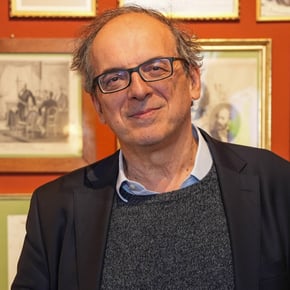Clinical trial at the Università Cattolica in Milan. A unique immersive virtual reality system has allowed 50 volunteers, under strict medical supervision, to have the experience of a psychedelic substance, without toxic effects for the body. Hallucinogens like LSD, declared illegal in 1971, have been “rehabilitated” in Switzerland and in certain other countries for use in experimental therapies for severe drug-resistant depression, eating disorders and alcohol addiction.
It all begins with the Psychedelic Renaissance
For about twenty years now, the term “Psychedelic Renaissance” has meant a scientific re-evaluation of the therapeutic potential of psychedelic substances, all of which became illegal in 1971 but have nevertheless been the subject of dozens of studies, which are shining a light on their potentialities, limits and risks.
Molecules like lysergic acid diethylamide (better known as LSD) and psilocybin (the active constituent in psilocybe mushrooms) have in fact – when used under strict medical supervision – been shown to have numerous therapeutic actions for the treatment of conditions such as drug-resistant depression, eating disorders, obsessive-compulsive disorders, alcohol addiction, and more.
How do psychedelic therapies work?
To put it very briefly, psychedelics work by creating a sort of transmission “blackout” of nerve impulses in certain areas of the brain, after which the brain explores new pathways and creates new connections, thus succeeding in overcoming the static and repetitive situations that typify many psychiatric disorders.
However, therapies involving psychedelics are complex, require specialised personnel to work for many hours and, most importantly, they involve a hallucinatory phase that is not always easy to manage. For these reasons, alongside research into the “classic” molecules, companies and research centres have also, for some time now, been working to find pharmaceuticals or other tools that can replicate the therapeutic effects of psychedelics, but without the risks associated with those substances, which in some cases can be extremely severe.
Cyberdelics: Immersive virtual reality as an alternative to substances
It is against this backdrop that Cyberdelics (a combination of cybernetics and psychedelics) have emerged. This approach does not omit the hallucinatory part, but rather recreates it using immersive virtual reality and artificial intelligence, and is therefore something entirely controllable, at least in terms of administration.
Among the pioneers in this field are a number of Italian researchers from the Humane Technology Lab at the Università Cattolica del Sacro Cuore (Milan campus), who have just published, in the scientific journal Dialogues in Clinical Neuroscience, the results of a study conducted on fifty healthy volunteers. The virtual reality method employed has been given the name of Hallucinatory Visual Virtual Experiences (HVVE). The purpose of using it was to test certain preliminary factors such as cognitive flexibility, inhibitory control, emotional response, and other parameters which delineate the activity of the central nervous system.
The study
Participants took part in a number of ten-minute HVVE sessions, with immersive virtual reality experiences that replicated, as mentioned above, psychedelic effects with visual hallucinations, mimicking those induced by psychedelic substance use. The cyberdelic environments were designed using specific visualisation techniques based on artificial intelligence.
Comparisons of the measurements taken before and after the experience demonstrated that the immersive virtual reality had been helpful.
Results of the study testing immersive virtual reality as a therapy
The 50 volunteers showed improvements in their inhibitory control and cognitive flexibility, as well as in parameters linked to their peripheral nervous systems, including heart rate, which (also) impact conditions such as anxiety and stress and one's relative ability to cope with them.
According to the researchers, the effects of immersive virtual reality are potentially similar to those which can be achieved by administering classic psychedelic substances, while the risks it poses, though not entirely absent, are far lesser and doubtless simpler to manage.
It is a first step that, according to the Italian researchers, merits more in-depth study, because it could potentially be of help to many people, even if it would still have to be administered in a controlled environment by trained personnel. The tests are continuing, and those involving people suffering from specific disorders should soon begin. It is believed that Cyberdelics could become a complement to classic therapies or even a bridge between traditional psychotherapy and innovative psychiatric approaches.
A safe laboratory for altered states of consciousness
At the same time, “classic” psychedelics are continuing their journey towards validation and, in Switzerland, Australia, the United States and other countries, they have begun to be administered in controlled conditions and in specialised clinics in the context of experimental protocols, with a variety of therapeutic aims.
In Italy, meanwhile, the Italian Medicines Agency (AIFA) has recently given the green light for the first official trials of psilocybin to treat drug-resistant depression.
“Digital psychedelic experiences,” as the researchers from the Università Cattolica explain, “are not intended to replace drugs. Our aim is to exploit virtual reality and technologies to create a safe laboratory in which to explore altered states of consciousness and their therapeutic potential.”




